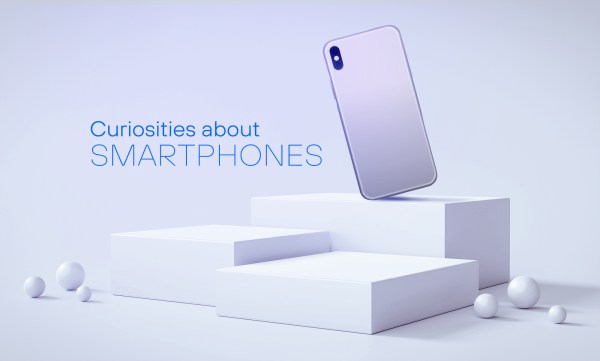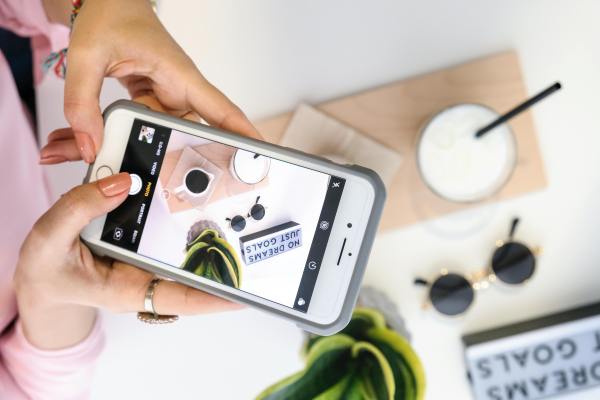Could you tell us about your job at Telefónica?
I have the honour of leading a team of colleagues and excellent professionals in the global management of devices, with the main objective of helping our OBs in the commercialisation and revenue generation of devices. We use the scale of the group to achieve differentiation and commercial advantages that allow us to be more competitive in our markets, while delighting our customers with a better customer experience.
Of the projects you are involved in, which do you think is the most relevant?
One of the advantages of being the global device unit is that we have access to innovation, new trends and opportunities well in advance. Right now we are in the early stages of a profound transformation in the mobile industry with an acceleration of innovation brought about by artificial intelligence in devices.
It is truly a fascinating time where the convergence of AI, 5G and other emerging technologies is opening up new possibilities for innovation in mobile devices. Our most relevant project is to navigate this transformation, ensuring that we leverage these technologies to create products that truly improve the lives of our users.
Of the professional work you have been doing at Telefónica, what do you think has been the most outstanding contribution? Why?
Honestly, the achievement of all the successes can only be understood as teamwork. Since the creation of the unit in 2013, we have managed to create a global and local team and process in constant improvement and evolution that helps us achieve our business objectives and differentiates us from other telcos. One way we measure the success of this process is through a metric we call efficiency, which measures the marketing contributions or funds we get from manufacturers, and which has been growing annually to reach 20% this year.
There are countless other examples of projects that I am very proud of where we have had a clear impact in helping OBs, from the Phoenix project where we created a global platform to help OBs digitally sell millions of devices to our customers, now evolving into an RCS/RBM solution, to the launch of TU.com in Spain, as a new digital device shop, which allowed us to deploy and test new e-commerce functionalities in a very fast, effective and low cost way. I would also like to highlight all the work on Sustainability and Circular Economy of devices that we do in collaboration with the global Supply Chain and Corporate Sustainability teams.
What future and/or immediate challenges do you think you will face in the short to medium term?
I see three major challenges:
- The speed at which new technologies emerge, especially in areas such as artificial intelligence and XR, requires a continuous updating of knowledge. This involves not only understanding these technologies, but also foreseeing how they can be effectively integrated into our devices to enhance the user experience.
- Staying abreast of changing consumer preferences and market trends is essential. This requires constant data analysis and agile interpretation of new user demands.
- We need to develop the ability to collaborate effectively with experts in a variety of areas, from software engineers and user experience specialists to financial services experts for device sales.
In short, the biggest challenge is to maintain a mindset of continuous learning and adaptability. In an industry as dynamic as mobile devices, the ability to quickly absorb new knowledge and apply it in innovative ways will be critical to professional success and the development of products that really make a difference in the market.
How would you see the issues to which you apply your professional field without Telefónica’s input?
Without Telefónica’s input, the field of mobile devices and telecommunications would lose a key player that drives innovation, local adaptation and competitiveness in the market. Its absence would be felt not only in terms of services and products, but also in the broader ecosystem of innovation and technological development in the regions where it operates.
For those of us who are unclear, could you explain what XR devices are all about?
XR, or Extended Reality, devices are technologies that combine the real world with virtual elements to create immersive and interactive experiences. XR is an umbrella term that encompasses three main types of technologies:
- Virtual Reality (VR): VR fully immerses the user in a computer-generated digital environment. To experience it, special headsets or goggles (HMDs) are used that block out the outside world, creating a sense of presence in a virtual world.
- Augmented Reality (AR): AR superimposes digital elements on the real world, enriching our perception of the environment. It can be accessed through smartphones, tablets or special glasses, allowing us to see and interact with virtual objects in physical space.
- Mixed Reality (MR): MR combines elements of VR and AR, allowing virtual objects to interact with the real environment in a more sophisticated way. MR devices can recognise the physical space and adapt virtual elements to it.
Can we expect a massive popularisation of the use of these devices, and what are the main use cases of these XR devices?
Mass popularisation of XR devices is a growing trend, although it still faces some challenges. There are multiple use cases, including entertainment, health and wellness, industrial use, and education. According to projections, a significant increase in the adoption of these technologies is expected in the coming years.
Despite the expected growth, mass adoption still faces challenges such as the need to educate the public about the technology, improve the comfort and ergonomics of the devices, and develop relevant and useful content for the average user. However, with continued innovation and the entry of major players such as Apple, Samsung and Google into the market, we are likely to see an acceleration in the adoption of XR devices from 2026 onwards.
What developments can we expect in the medium to long term, and can we expect a revolution in this area?
In the medium to long term, we can expect major developments in the field of XR devices, with Android XR, which was announced on 12 December, playing a crucial role in this technological evolution:
- More affordable and ergonomic devices.
- Advanced AI integration for dynamic content generation.
- Improved immersive experiences and greater integration with existing ecosystems (iOS and Android), such as Google Maps navigation with AR glasses.
Does the use of these generally expensive devices help to reduce the digital divide or does it widen it?
It significantly reduces it, since there are more affordable devices, such as the Quest glasses, which allow us to reach a massive segment of customers. In fact, many educational institutions are using XR device loan or financing programmes to provide immersive educational experiences that benefit students in remote and resource-constrained areas.
Which teammate do you nominate for this interview that you consider excellent at their job?
The truth is that I have a very long list of colleagues outside my team who are true cracks and for whom I have the utmost respect and admiration, and from whom I constantly learn every day. That is precisely one of the differential values of Telefónica, the colleagues who are part of this great family! Perhaps to nominate some of the people with whom I work constantly on innovation issues, I would mention Yaiza Rubio, our new Chief Metaverse Officer, and Antonio Guzmán, Director of Discovery, with whom we are analysing the evolution of AI in devices. I would also like to nominate Luis Prendes and Manuel Jiménez, who for me represent the soul and honesty of Telefónica. Finally, I would like to mention Elisa Caballero, Luis Rivera, Alfredo Serret, Mariano Martínez and Fernando Valero, with whom it is always a pleasure to talk and get their perspective and strategic vision and to have their support.








